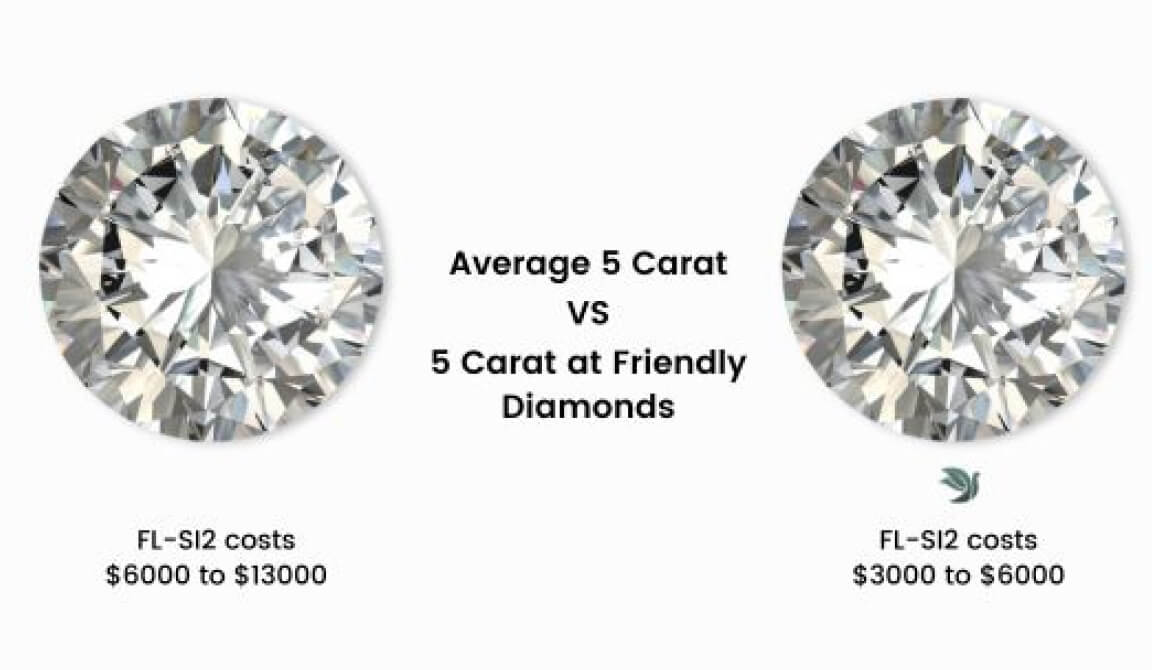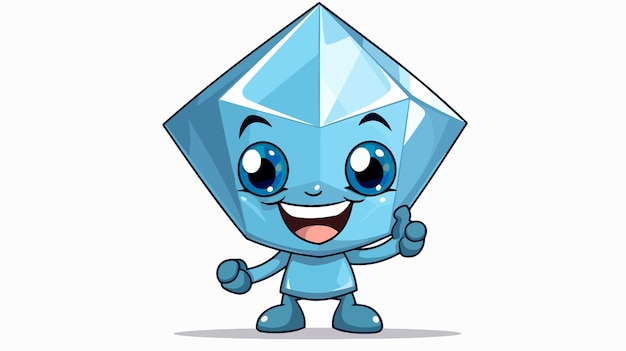For centuries, diamonds have held an unparalleled mystique, symbolizing love, commitment, and eternal beauty. They have graced royalty, cemented engagements, and become heirlooms passed down through generations. Yet, beneath their dazzling surface, the traditional diamond industry has long grappled with a complex and often troubling history – one marred by ethical dilemmas, environmental degradation, and opaque supply chains. In an era where consumers are increasingly conscious of their purchases’ impact, a new paradigm is emerging: the "Friendly Diamond." This innovative category is not merely a trend; it represents a profound shift in how we perceive and acquire these precious gems, aligning luxury with integrity, sustainability, and transparency.
The Genesis of "Friendly": Addressing a Troubled Past
To understand the appeal of friendly diamonds, one must first acknowledge the shadows that have historically fallen over their mined counterparts. The term "blood diamonds" or "conflict diamonds" entered the global lexicon, exposing a brutal reality where the sale of diamonds funded civil wars and human rights abuses, particularly in West Africa. Beyond direct conflict, the broader mining industry has been criticized for its environmental footprint – massive land disruption, deforestation, water pollution, and significant carbon emissions. Furthermore, concerns about exploitative labor practices, unsafe working conditions, and a lack of transparency in the supply chain have persisted, making it difficult for consumers to ascertain the true origin and ethical journey of their diamond.
As global awareness grew, so did the demand for change. Consumers, particularly younger generations, began seeking products that reflected their values. They wanted not just beauty, but also a clear conscience. This burgeoning ethical consumerism laid fertile ground for the emergence of alternatives that could offer the same brilliance and allure without the accompanying moral baggage.
What Exactly Makes a Diamond "Friendly"? The Lab-Grown Revolution
At the heart of the friendly diamond movement lies a revolutionary technology: the creation of lab-grown diamonds. These are not simulants like cubic zirconia or moissanite; they are real diamonds in every sense of the word. Chemically, physically, and optically identical to mined diamonds, lab-grown diamonds exhibit the same fire, sparkle, and durability. The key difference lies in their origin: instead of being extracted from the earth, they are cultivated in highly controlled laboratory environments.
There are primarily two methods for growing diamonds in a lab:
- High-Pressure/High-Temperature (HPHT): This method mimics the natural conditions under which diamonds form deep within the Earth. A tiny diamond seed is placed in a growth chamber with carbon-rich material and subjected to immense pressure and high temperatures, causing the carbon to crystallize around the seed.
- Chemical Vapor Deposition (CVD): In this method, a diamond seed is placed in a vacuum chamber, and carbon-rich gases are introduced. Plasma is then generated, breaking down the gas molecules, allowing pure carbon to precipitate onto the seed, atom by atom, forming a diamond layer by layer.
Both processes yield diamonds that are indistinguishable from mined diamonds without specialized equipment. They are graded using the same "4 Cs" (Carat, Cut, Color, Clarity) and certified by reputable gemological laboratories like IGI (International Gemological Institute) and GIA (Gemological Institute of America), ensuring their quality and authenticity. This scientific breakthrough is the bedrock upon which the concept of friendly diamonds is built.
The Pillars of "Friendliness": Ethics and Environmental Superiority
The "friendly" designation for these diamonds stems directly from their ethical and environmental advantages:
-
Guaranteed Conflict-Free and Ethical Sourcing:
- No Blood Diamonds: By their very nature, lab-grown diamonds are created in controlled environments and do not fund conflicts or illicit activities. Their origin is entirely traceable, providing consumers with absolute assurance that their purchase is free from any association with human rights abuses.
- Fair Labor Practices: The production of lab-grown diamonds takes place in state-of-the-art facilities where labor laws are strictly enforced. Workers operate in safe, regulated environments, receiving fair wages and benefits, a stark contrast to the often perilous and unregulated conditions found in some artisanal mining operations.
- Transparency: The journey of a lab-grown diamond is fully documented from its inception as a seed to its final polished form. This level of transparency is virtually impossible to achieve with mined diamonds, whose complex supply chains often involve multiple intermediaries across continents.
-
Significant Environmental Benefits:
- Reduced Land Disturbance: Diamond mining is an incredibly invasive process, requiring the excavation of vast amounts of earth, often leading to deforestation, habitat destruction, and soil erosion. Lab-grown diamonds, conversely, are created in compact, contained facilities, leaving natural landscapes undisturbed.
- Lower Carbon Footprint: While lab-grown diamond production does require energy, the overall carbon footprint is significantly lower than that of traditional mining. The industry is continuously innovating to reduce energy consumption and increasingly relies on renewable energy sources, moving towards a truly carbon-neutral or even carbon-negative production model.
- Minimal Water Usage: Mining operations consume billions of gallons of water annually, often polluting local water sources with chemicals and sediments. Lab-grown facilities use far less water, and what is used can often be recycled.
- No Waste Tailings: Mining produces enormous quantities of waste rock and tailings, which can contain harmful substances and require long-term management. Lab-grown diamonds produce virtually no such waste.
Beyond Ethics: Quality, Value, and Accessibility
While ethical and environmental considerations are paramount, friendly diamonds offer compelling advantages that extend beyond their responsible origins:
- Uncompromised Quality: As mentioned, lab-grown diamonds possess the exact same chemical composition and physical properties as natural diamonds. This means they offer identical brilliance, fire, and scintillation. When you choose a friendly diamond, you are not compromising on beauty or durability; you are simply choosing a different origin.
- Exceptional Value: Due to the absence of extensive mining operations, complex supply chains, and often inflated markups, friendly diamonds are typically 30-50% more affordable than their mined equivalents of the same quality and size. This significant price difference allows consumers to acquire a larger, higher-quality diamond for their budget, making luxury more accessible without sacrificing aesthetic appeal.
- Perfect Imperfection (or lack thereof): Lab environments allow for greater control over the growth process, often resulting in diamonds with fewer inclusions and higher clarity grades. While natural diamonds are celebrated for their unique "fingerprints," the consistent quality of lab-grown diamonds is a significant draw for many.
- Innovation and Customization: The controlled growth environment opens possibilities for creating unique colored diamonds (like vibrant blues or pinks) more consistently and affordably than finding their extremely rare natural counterparts. This allows for greater customization and personalization.
The Evolving Consumer Landscape and Market Acceptance
The market for friendly diamonds is booming, driven largely by a new generation of consumers who prioritize purpose alongside prestige. Millennials and Gen Z are not just buying products; they are investing in brands and items that reflect their personal values. For them, a diamond’s story and impact are as important as its sparkle.
Major jewelers and luxury brands are taking notice, with an increasing number now offering lab-grown diamonds alongside or even as a primary alternative to mined diamonds. Celebrities are sporting them on red carpets, and publications are highlighting their benefits, gradually dismantling old stigmas. The narrative is shifting: friendly diamonds are no longer seen as "alternatives" but as a sophisticated, responsible, and equally desirable choice. They represent modern luxury – where cutting-edge technology meets ethical responsibility and exquisite beauty.
Choosing Your Friendly Diamond: What to Look For
When selecting a friendly diamond, the process is largely similar to choosing a mined one, with a few key considerations:
- The 4 Cs: Always prioritize the 4 Cs (Carat, Cut, Color, Clarity) to ensure you’re getting a diamond that meets your aesthetic and quality standards.
- Certification: Ensure your friendly diamond comes with a reputable gemological certificate (e.g., IGI, GIA) that verifies its characteristics and confirms its lab-grown origin.
- Retailer Reputation: Purchase from trusted jewelers who are transparent about their sourcing and can provide details about the production process of their lab-grown diamonds.
- Sustainability Practices: If environmental impact is a primary concern, inquire about the energy sources used in the diamond’s production. Many friendly diamond producers are actively working towards using renewable energy.
Conclusion: A Guilt-Free Sparkle for a New Era
Friendly diamonds are more than just a product; they are a testament to human ingenuity and a beacon of hope for a more ethical and sustainable future in the luxury industry. They offer a compelling solution to the historical challenges associated with traditional diamond mining, providing consumers with a guilt-free sparkle that aligns with modern values.
As awareness grows and technology continues to advance, friendly diamonds are poised to become not just an accepted alternative, but potentially the preferred choice for those who seek uncompromised beauty, exceptional value, and a clear conscience. They are redefining what it means to be luxurious in the 21st century, proving that true brilliance can indeed be friendly, ethical, and exquisitely beautiful, all at once. The future of dazzling elegance is undoubtedly friendly.


